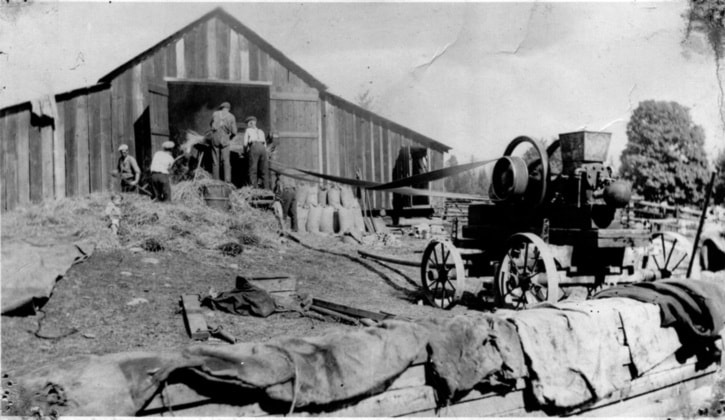We’re not likely to witness this scene again, but 70 plus years ago, in 1940, it was pretty commonplace. Driving up Church Road today, this picture would be on your left, after you passed the intersection with Throup Road. This was the farm of Ralph Strong, who had married Jessie Cains, a granddaughter of the Charters family.
Threshing crews would move about the region, from Metchosin, Milnes Landing, Sooke and Otter Point, taking the responsibility in turn for threshing the grain from the major farms that produced feed for their own dairy cattle to hold them over the winter. The men sweated and strained as they did the lifting and toting and feeding of sheaves into the maw of the machine in the dusty barnyard. Meanwhile the women pulled roasts and pies out of the ovens of their woodstoves. The crews needed to be well fed to keep their energy renewed, and besides a robust lunch were given tea and pie breaks morning and afternoon so they could work till dusk.
This threshing outfit was operated by William Arden of Metchosin, kin of Eustace Arden who became the first lighthouse keeper at Sheringham Point, and for whom Eustace Road is named in downtown Sooke. Ralph and Jessie Strong raised a son Wilf who married Margaret Lorimer, only daughter in the distinguished Lorimer family of North Sooke.
After the Strong family tenure on this property, it was purchased by John “Jake” Acreman who farmed there with his wife Loretta Moore for many years. When the Acremans moved to a spread where they could expand their cattle ranching at Elk Meadows, north of Campbell River, this land was developed into housing. I wonder, would the dozens of residents who live at “The Ponds” today, believe that their home looked like this a few decades ago?
Elida Peers,
Historian
Sooke Region Museum
